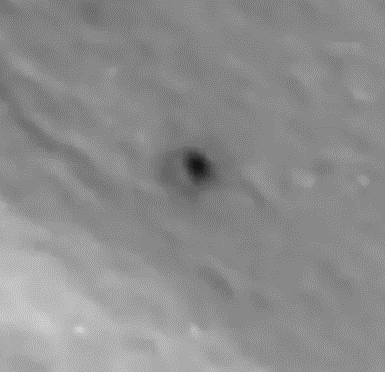An amateur astronomer hunting through old images from the Galileo mission spotted something everyone else had missed – an apparent impact crater. Now, professional astronomers have provided evidence that what Jesper Sandberg found was the real thing, an asteroid impact Io’s volcanic activity has yet to eliminate.
From the moment Galileo turned his telescope to the Moon, it was obvious our satellite was covered in craters. Although these were initially thought to be the legacies of volcanoes – by far the most common sort of crater the era’s scientists knew from Earth – eventually it was realized they were the products of rapid encounters with space rocks.
Once missions began to other planets it became clear that being covered in craters is the Solar System norm, gas giants aside. Most worlds, like our Moon, bear their craters proudly, with impacts dating back billions of years on display. Wind or water have eroded most traces on Earth, Mars, and Europa, but a few remain visible on each.
Io has been the exception. It’s not because it never gets hit – indeed Jupiter’s proximity to the asteroid belt means its moons cop more than most. However, with more than 400 active volcanoes, fueled by Jupiter’s tidal flexing, craters don’t last long on Io before being filled in by flowing lava. Yet it seems there is one still around.
Sandberg noticed something suspiciously round-looking in Galileo data at ~51.7˚S, 117.1˚W on the flank of a mesa (flat-topped hill). The image can be seen in four frames, suggesting no trick of the light.
On such a volcanic moon, the obvious suspicion is that this is the crater of a volcano, but at the American Geophysical Union conference last week, Professor David Williams of Arizona State University and NASA’s Jet Propulsion Laboratory’s Dr Rosaly Lopes presented evidence an impact crater is the most likely explanation.
The crater is 7-8 pixels across in images taken by Galileo on October 16, 2001, when its distance placed the resolution at 13 m/pixel, making the crater 92-104 meters (300-360 feet) in diameter. Besides the roundness, ejecta lines around the crater look more like that from a collision than from an eruption.
The location might seem particularly unlikely since it is certainly not isolated from Io’s ceaseless volcanism. “The whole region subsequently has been undergoing gradational processes, perhaps including deposition of sulfurous materials from nearby plume eruptions and degradation including slumping of sulfurous plains deposits, sublimation, or other processes,” the presenters note.
Nevertheless, Williams told Eos, “I actually processed the Galileo SSI mosaics from that time. I went back, pulled it up, and looked up close – sure enough, there’s a spot that could easily be interpreted as an impact crater.”
If that’s what it is, the big question is if Galileo (spacecraft not scientist) happened to catch it during a brief period of survival, or if there are more on Io like this than we thought.
Galileo’s pass was not close enough to get great resolution, so this is the largest image we can squeeze out of it. However, it does reveal the bowl shape and surrounding halo that indicates its likely origins.
Image Credit: NASA/Arizona State University
We have no update on whether the crater survives 20 years later, but that may change. The first part of the Juno mission was focused on Jupiter itself, and it only recently shifted its attention to the moons. After flybys of Ganymede and Europa, it was finally Io’s turn in December 2022. However, that, and a subsequent pass last year, were still at distances far greater than Galileo’s pass.
However, a closer flyby is set to occur on December 30 this year, followed by one on February 3, 2024. As their names suggest, neither the Europa Clipper nor the Jupiter Icy Moons Explorer (JUICE) have Io as a prime target, but it’s possible one will get close enough to look for other crater locations.
Lopes is co-author of a preprint mapping Io’s volcanism over more than 40 years. This reports that since 2013, volcanic activity has been concentrated in the southern trailing hemisphere. Though far in the south, Sandberg’s crater site is on Io’s leading hemisphere, leaving some hope for survival.
The presentation’s abstract can be found here.
Source Link: Amateur Astronomer Spots First Suspected Impact Crater On Jupiter’s Moon Io
